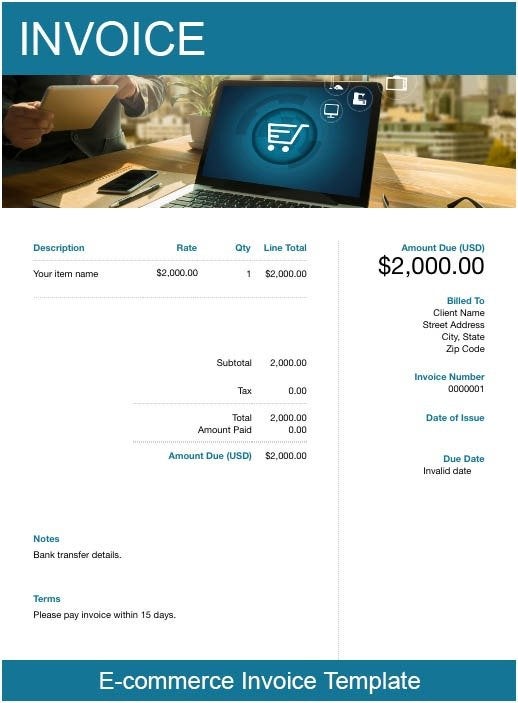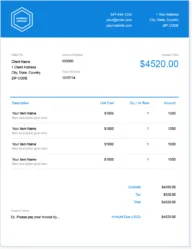
E-Commerce Invoice Template
Don’t send mediocre invoices. The free e-commerce invoice template will impress clients and clearly outline what they need to know about their order.
The Best Invoicing for E-Commerce
Easily create detailed invoices and eliminate customer confusion with Freshbooks’ invoicing software. Stop the back and forth. Answer questions the first time with crystal clear invoices.
Join 30 million people who have used FreshBooks

Get Your Free E-Commerce Invoice Template
An e-commerce business needs a simple, straightforward way to confirm transactions and send customers detailed receipts for their orders.
Free e-commerce invoice templates from FreshBooks will help you quickly create professional invoices. The intuitive layout and detailed, customizable fields make it easy for you to create invoices your customers will love.
Download FreshBooks’ e-commerce invoice templates in formats like .DOC, .XLS, .PDF, Google Docs and Google Sheets. Then, customize them to suit your needs. You can find the free invoice templates gallery here.
Download E-Commerce Invoice Templates
E-Commerce
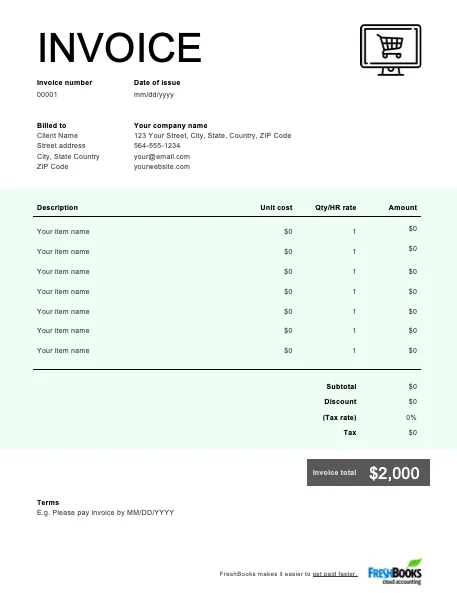
A simple, straightforward invoice template you can quickly fill out and email or print on the spot. Customize the fields and add as much detail as you want to keep your customers happy and your billing accurate.
Download as:
Online Shopping
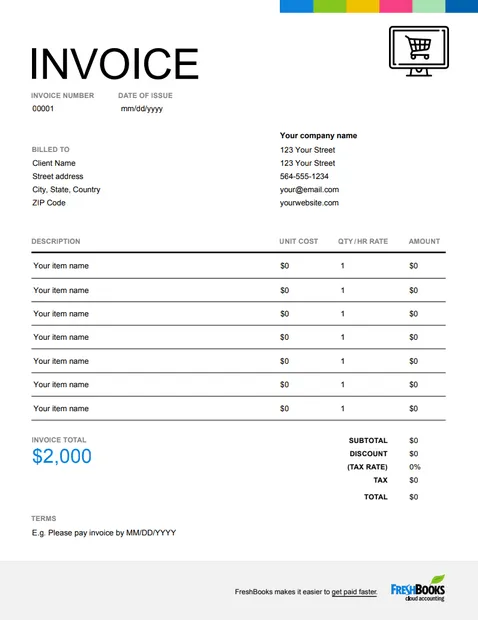
A detailed invoice template that allows you to quickly add customer purchases and pricing. Customize the template with branding like your logo and a custom message to connect further with your customers.
Download as:
What Is an E-Commerce Invoice Template Used For?
An e-commerce invoice is used to confirm an e-commerce transaction and provide a detailed order confirmation to customers. That said, some business-to-business merchants may offer credit—the order will be placed first and the invoice will be sent later to ask for payment.
They can be used by the following e-commerce business models:
- Business-to-business
- Business-to-consumer
- Retail
- Dropshipping
- Wholesaling
- Warehousing
- Manufacturing
- Subscription-based
- White-labeling
E-commerce transactions are usually paid for on the spot. In this case, invoices act as a receipt that e-commerce businesses email to customers after the transaction is confirmed.
A customer can use an e-commerce invoice to confirm that the right product or service was ordered, the quantity and prices are correct and any discount codes, coupons or credit were applied correctly. And since sales tax rates in the United States vary by state, e-commerce invoices also confirm how a customer is being taxed based on their location.
A merchant can also include on their invoice a return policy, warranties, guarantees, contact information for customer service inquiries and privacy policy.
Customers love e-commerce invoices—the open rate on order confirmations is more than 100 percent. Invoices are a great marketing tool to engage customers. For example, you could include branding like company colors or personalized messages.
How to Create an E-Commerce Invoice
To create your own e-commerce invoice, get our free downloadable template and customize it according to your business’s needs.
Create an e-commerce invoice by following these steps:
- Download one of the free e-commerce invoice templates
- Add your contact information, including your official business name. Also mention if you’re a franchise of another company. Your address is important as this can determine how you’re taxing your customers. You may also want to include customer service contact information, like an email address
- Insert your company logo and other branding
- Fill in your customer’s information. At minimum, include their full name. Some merchants like to include the customer’s street address and email address, as well
- Add an invoice number and invoice date
- List the products or items ordered. Add details like size, quantity, type, unit price and total price, as applicable
- Include anything that could affect the final price like discount codes, sales tax and any other taxes, shipping and handling fees or credit
- Add your tax registration code and business registration code
- Insert payment terms. If the customer has already paid, indicate how they did so. If they haven’t paid yet, mention how you’d like to process their payment
- Add terms and conditions that explain return policies, guarantees, warranties and repair policies
- Add your privacy policy
- Send the completed invoice to your customer via email
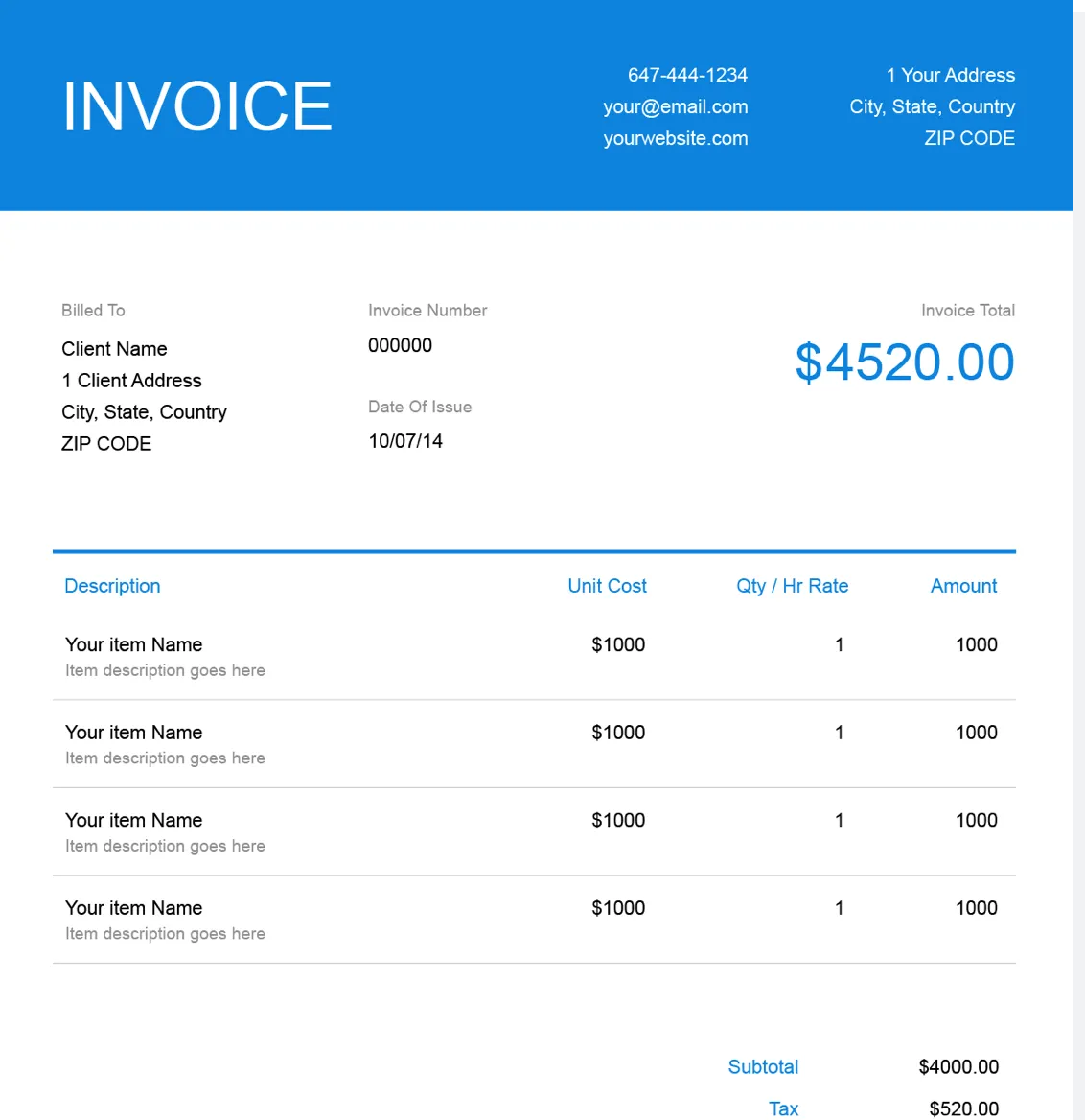
Invoice Types for eCommerce Merchants
E-commerce merchants should choose the invoice type that best fits their billing practices.
Here are the most common invoice types in e-commerce:
- Standard Invoice: The typical invoice used to confirm a transaction or ask for payment
- Automatic Invoice: The best option if you invoice your clients the same amount every billing cycle, such as for a subscription
- Credit Invoice: Used to issue a refund or a discount. You can use a credit invoice to resolve a customer dispute or correct an error
- Mixed Invoice: Can be used to both bill for or confirm an order and issue a refund or discount at the same time
Download an E-Commerce Invoice Template for Free
Download the free e-commerce invoice template for free and instantly start creating professional invoices for your e-commerce business, whether you’re based in the US, Canada, the UK or beyond.
A detailed, branded and personalized e-commerce invoice will help customers understand exactly what they’ve ordered and who to contact for support. Customers will feel more engaged with your business which will encourage them to become repeat buyers.


